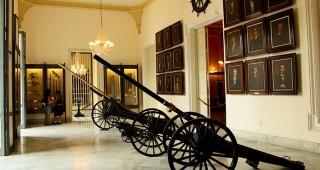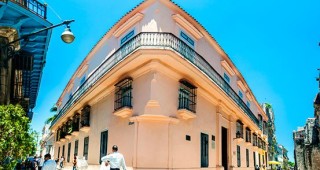Owned by Julián de Zulueta, construction work began in 1890 according to the project designed by architect Pedro Tomé Veracruisse; however, still unfinished, it was sold to Andrés Gómez Mena, who completed the first floor. Four other floors were subsequently added from 1916 to 1918, all of which were designed around a central courtyard, which ensured natural lighting and ventilation. The ground floor, which was surrounded by wide galleries with inner passageways that met in a rotunda, was set aside for shops, while the upper floors housed business offices, law firms, notary’s offices and other. It held over 500 departments and it was estimated that a floating population of 25,000 people would visit the place every day.
(under restoration)




 Baroque
Baroque







